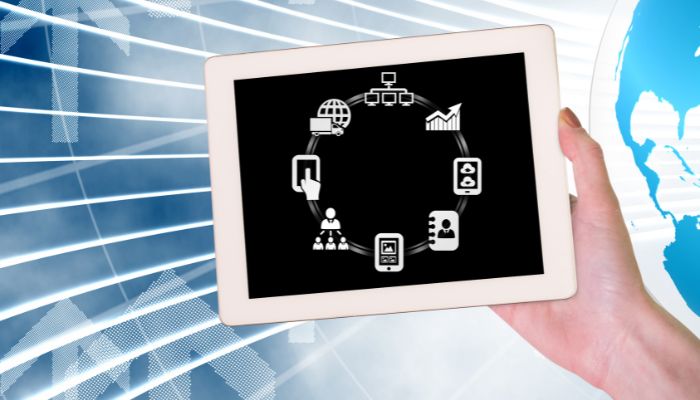Payroll processing in India is undergoing a vast change, mainly on account of market forces unrelated to payroll. The way people consume goods and services is totally changed. The millennials and Gen Z mostly use payment apps for all kinds of buying of goods and services in their day-to-day life. It is the norm. This expectation extends to employees wanting to control the timing of payment of their salaries. Employers must meet this expectation, else they will face employee turnover which can prove very costly. Companies have to devise ways that help their employees meet their financial obligations on time. One way of doing it is to enable employees control over the timing of payment of their salaries. Companies like Walmart have already started this by allowing their employees access to their earned wages on their own timing.
Challenges in Payroll Management in the New Business World
Challenges for payroll management processes in the new business world are many. Forms of employment are changing. Mobile workforce, contract employees, and changing laws relating to these are some of the complex issues that need to be resolved. The requirements of industries in terms of newer employment need the HR to be quick in response, prescient (i.e., anticipate change before it happens), and focused. HR has to be as responsive in payroll processing as other departments such as finance and operations in a company and speak in one language so that the stated goals of the company can be met. A variety of technological tools such as SaaS, RPA and Bots, mobility, and analytics are all useful to achieve this.
Technological Trends in Payroll Processing
Cloud-Based Payroll and HR Management
Payroll and HR have moved to the cloud. Most companies and HR managers outsource the payroll management process. Cloud computing has become their preferred way of doing it for obvious benefits. It enables access to data on any device anytime. It includes services like storage, backup, and hosting, and software as a service (SaaS). Software updation is instant, and security is superior (better than a hard disk or a desktop). This is a growing trend. It is estimated (Forbes report) that by 2020, nearly 83% of the businesses will be cloud-based.
AI in Payroll Processing
Companies are opting for AI-based payroll processing software. Such software is very helpful in filling payroll information in a fast and efficient manner. Employees also enjoy using automated systems, auto-generated data, and other such technologies for their routine work. The use of AI is becoming all-pervasive in business, from the ground level up.
Robotic Process Automation (RPA)
Robotic process automation in payroll processing services (RPA) is moving towards cognitive RPA. This is RPA with AI. Organizations are using cognitive RPA to eliminate mistakes and increase accuracy.
Integration of Payroll with HR and Accounting Functions
One of the most important functions of payroll processes in HR is the integration of employees with accounting and expense management. A real threat is data duplicity and mistakes in posting entries in various databases. HR integration takes care of these issues. HR integration, by using tools like location-based attendance tracking, onboarding of employees, training, and background verification, helps organizations manage workforce and payroll in a more efficient manner.
Customization of Payroll Software
HR functions are dependent on the stated objectives of a company. HR’s responsibilities are to take the best possible care of the workforce. Customized online payroll software works best to achieve this goal. Customized payroll processing software allows HR to manage payroll for different types of employees, like regular, part-time, and contract employees. These types of employees require different formats for salary structure. Customization is a major trend in payroll processing services.
Mobility Apps and Enhanced Employee Experience
Mobility apps improve employee experience. The anytime-anywhere access that the mobility apps promise is very useful for employees in managing their time better. These apps also help employees in planning their business travel and reporting expenses relating to their business travels. Mobility apps will be used by HR more and more. Employees will be able to avail of HR services on the go due to these mobility apps.
Significance of Input Data Cleansing
Input data cleansing will acquire great significance. Most companies, over a period of time, have implemented various kinds of software applications. Data from these legacy software systems about employees, such as attendance, timesheets, loss of pay, and performance, is used in payroll as input data. This data from various sources that are not integrated can lead to problems and inaccuracies. Input data cleansing, therefore, is of vital importance, as accurate input data will yield accurate output that is payroll and payslips.
Automation Through ICR and OCR Technology
Intelligent character recognition (ICR) and optical character recognition (OCR) technology will be used increasingly to automate payroll functions further. These technologies can be used to automate income tax proof and travel bills submitted by the employees.
Role of Payroll Management in Productivity and Engagement
For optimum productivity, payroll management and employee engagement play a very crucial role. It is very difficult to measure the performance of individual employees. The HR payroll management software helps team leaders to track the performance of individual employees in real time. Team leaders can intervene and counsel from time to time and improve overall productivity and employee engagement.
References :
- Jagdish Ramamoorthi. Payroll processing in India and trends to watch out for. 26 Jan 2019.
- Market forces driving payroll trends. Jason Lee. 22 Jun 2018
- Top five payroll trends. 27 Dec 2018. Sumo admin.






